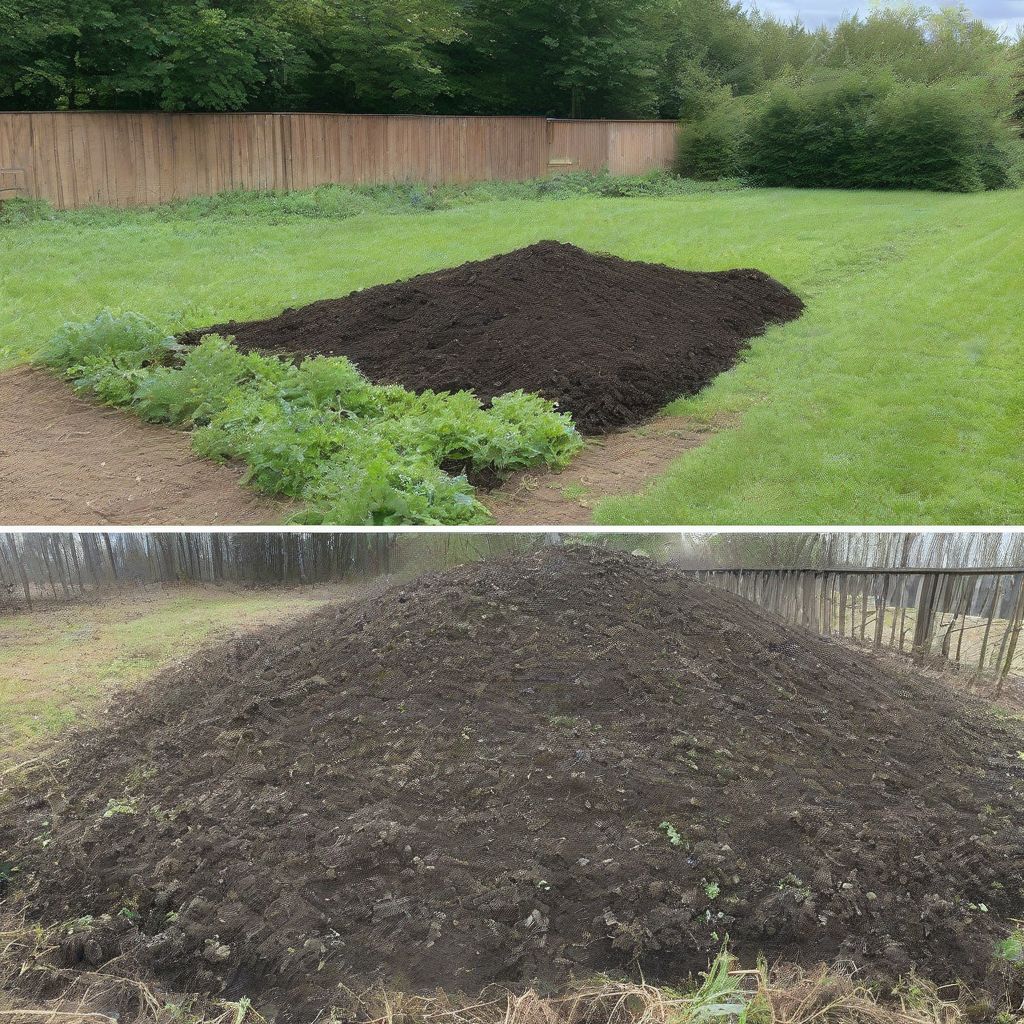Imagine two chefs, both aiming to create a delicious, nutrient-rich meal. One chef uses fresh, chopped vegetables directly in their dish, while the other meticulously prepares a stock from vegetable scraps. Both approaches add flavor and nutrition, but they do so in distinct ways. This analogy perfectly captures the difference between green manure and compost, two powerful tools for enriching your garden soil. Both contribute to soil health, but they achieve this through different processes and offer unique benefits.
Understanding Green Manure
Green manure involves growing specific plants, typically legumes or grasses, with the sole purpose of incorporating them back into the soil while they’re still green and actively growing. This process, much like adding fresh vegetables to a dish, provides a readily available source of nutrients.
Benefits of Green Manure
- Nutrient Boost: Green manures, especially legumes, are nitrogen fixers. They pull nitrogen from the air and store it in their roots, making it available to subsequent crops once incorporated into the soil.
- Improved Soil Structure: Green manure adds organic matter, which enhances soil tilth, aeration, and water retention.
- Weed Suppression: A dense cover crop can effectively suppress weeds, reducing the need for herbicides.
- Erosion Control: Green manure protects the soil surface from erosion caused by wind and rain.
- Pest and Disease Control: Some green manures can help suppress soilborne pests and diseases.
Examples of Green Manure Crops
- Legumes: Clover, alfalfa, vetch, beans
- Grasses: Rye, oats, barley
- Mustards: Indian mustard, oilseed radish
Understanding Compost
Compost, on the other hand, is the result of decomposition of organic materials like kitchen scraps, yard waste, and manure. Think of it as the rich stock created from various ingredients, a concentrated form of organic matter. It’s a more complex process, requiring time and proper management.
Benefits of Compost
- Enhanced Soil Fertility: Compost provides a wide range of essential nutrients for plant growth, including nitrogen, phosphorus, and potassium.
- Improved Soil Structure: Compost improves soil aggregation, drainage, and water-holding capacity.
- Increased Microbial Activity: Compost introduces beneficial microorganisms that break down organic matter and make nutrients available to plants.
- Disease Suppression: Compost can suppress certain plant diseases.
Composting Methods
- Hot Composting: Requires careful monitoring of temperature and moisture levels to ensure rapid decomposition.
- Cold Composting: A slower process that requires less management but takes longer to produce finished compost.
- Vermicomposting: Utilizes worms to break down organic matter, creating a nutrient-rich compost known as vermicast.
Green Manure vs. Compost: Key Differences
| Feature | Green Manure | Compost |
|---|---|---|
| Source | Living plants | Decomposed organic matter |
| Nutrient Release | Relatively fast | Slow and steady |
| Nitrogen Fixation | Primarily legumes | Not typically |
| Weed Suppression | Excellent | Minimal |
| Erosion Control | Effective | Less effective |
| Time Investment | Requires growing time | Requires decomposition time |
Choosing the Right Approach for Your Garden
The best choice between green manure and compost depends on your specific needs and gardening goals. If you need a quick boost of nitrogen and want to improve soil structure quickly, green manure is a great option. If you’re looking for a long-term solution to enhance soil fertility and build healthy soil, compost is the way to go. Many gardeners use both green manure and compost in a complementary way, maximizing the benefits of each.
“A healthy garden starts with healthy soil, and both green manure and compost are valuable tools for achieving that goal.” – Gardening for Beginners, 2023
For example, a gardener might plant a cover crop of legumes in the fall to fix nitrogen and protect the soil over winter. Then, in the spring, they could incorporate the green manure into the soil and add a layer of compost before planting their vegetables. This combined approach provides both a quick nutrient boost and long-term soil improvement.
 Green Manure vs. Compost
Green Manure vs. Compost
Practical Tips for Using Green Manure and Compost
- Green Manure: Choose a green manure crop suited to your climate and soil type. Incorporate it into the soil a few weeks before planting your main crop.
- Compost: Use finished compost that is dark brown, crumbly, and has an earthy smell. Apply a layer of compost to your garden beds before planting or use it as a top dressing around existing plants.
By understanding the unique benefits and applications of green manure and compost, you can empower yourself to create a thriving and productive garden.
Conclusion
Green manure and compost, while distinct in their approach, both contribute significantly to soil health and fertility. Green manure acts as a fresh, direct nutrient input, while compost offers a slow-release, comprehensive enrichment. Understanding their differences empowers you to choose the best strategy for your garden, or even to combine both for optimal results.
Do you have any experiences with using green manure or compost in your garden? Share your tips and insights in the comments below! Explore our other articles on sustainable gardening practices to further enhance your gardening journey.



